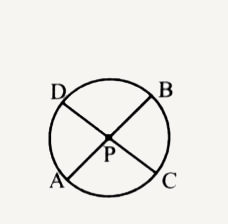According to Boil's law PV = C, where V = 600 cm3, P = 150 SI/cm2 and dPdt=20SI/cm2. Find dVdt. Solution in Gujrati
The correct Answer is:80cm3/min
Step by step video, text & image solution for According to Boil's law PV = C, where V = 600 cm^(3), P = 150 SI/cm^(2) and (dP)/(dt)=20 SI//cm^(2). Find (dV)/(dt). by Maths experts to help you in doubts & scoring excellent marks in Class 12 exams.
Topper's Solved these Questions
- BOOK - KUMAR PRAKASHANCHAPTER - APPLICATION OF DERIVATIVES EXERCISE - TEXTBOOK BASED MCQS83videos
APPLICATION OF DERIVATIVES
- BOOK - KUMAR PRAKASHANCHAPTER - APPLICATION OF DERIVATIVES EXERCISE - TEXTBOOK ILLUSTRATIONS FOR PRACTICE WORK51videos
APPLICATION OF DERIVATIVES
- BOOK - KUMAR PRAKASHANCHAPTER - APPLICATION OF DERIVATIVES EXERCISE - MISCELANEOUS EXERCISE - 627videos
APPLICATION OF DERIVATIVES
- BOOK - KUMAR PRAKASHANCHAPTER - ANNUAL EXAMINATION :SAMPLE PAPEREXERCISE - PART-B ( SECTION-C)10videos
ANNUAL EXAMINATION :SAMPLE PAPER
- BOOK - KUMAR PRAKASHANCHAPTER - APPLICATION OF INTEGRALSEXERCISE - PRACTICE PAPER ( SECTION -D)2videos
APPLICATION OF INTEGRALS
Similar Questions
If x and y are the sides of two squares such that y=x−x2. Then the rate of change, if the area of second square with respect to the first square, when x = 2, is ……….
02:16View SolutionFind the rate of change of the area of a circle per second with respect to its radius r when r = 5 cm.
02:44View SolutionUsing differentials, find the approximate value of each of the following:
(a)(1781)14 (b) (33)−1503:45View Solutionshow that
⎡⎢ ⎢⎣(x+y)2zxzyzx(z+y)2xyzyxy(z+x)2⎤⎥ ⎥⎦=2xyz(x+y+z)301:46View SolutionFind the area of the regaion enclosed by {(x,y):y2≤4x,4x2+4y2≤9}.
01:28View SolutionIf p=9,v=3, then find p is terms of v from the equation dpdv=v+1v2
View SolutionThe current density in a wire is 10A//cm^(2) and the electric field in the wire is 5 V/cm. If p = resistivity of material, sigma = conductivity of the material then (in SI unit)
02:37View Solution(i) What does ∣∣∣dvdt∣∣∣ and d|V|dt represent ?
(ii) Can these be equal ?
(iii) Can d∣Vdt=0 while ∣∣∣dVdt≠0 ?
(iv) Can d|V|dt≠0 while ∣∣∣dvdt∣∣∣=0 ?02:11View SolutionIf pv=81, then dpdv at v=9 is equal to
01:59View SolutionIf pv = 81, then dpdv at v=9 is
02:34View SolutionThe adiabatic law for the expansion of a gas is given by the equation pv1.4=k, where k is a constant. At a given time when p is 50 dynes per square cm and v is 20 c c, then v is decreasing at the rate of 2 c c, per second. Find the rate of change of p at that instant.
02:09View Solutionसत्य/असत्य कथन चुनें
अवकलन के रूप में त्वरण a=dvdt तथा a=d2xdt2 होता है |01:22View SolutionIf pv=81 then dpdv at v=3 is
02:39View SolutionIn the given figure, AP = 2 cm, BP = 6 cm and CP = 3 cm. Find DP :
 03:32View Solution
03:32View SolutionIf pv=81, then dpdv at v=9 is …............. .
01:59View Solution

